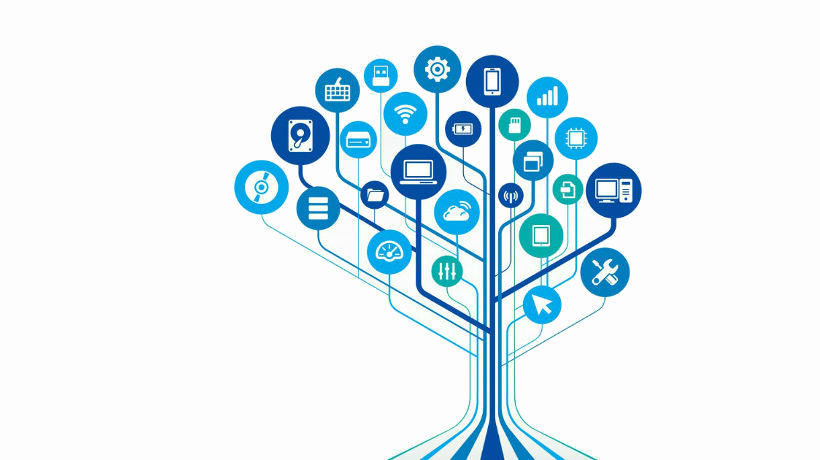What Does Psychology Say About eLearning?
Psychology agrees on the many benefits that eLearning offers to learners' well-being. The flexibility and convenience that come with eLearning allow people to expand their horizons regardless of busy schedules or the inability to attend lessons in person due to geographical limitations. Additionally, eLearning helps with knowledge retention because of the use of interactive media. However, to dive deeper into the psychological aspects of this, we must understand how our brains work during the learning process.
How Does The Brain Learn?
Learning Process
Our brain has approximately 85 billion neurons that send information to one another. When we're learning, our brain makes new connections between its neurons. The more we practice, the more connections our brain creates. So, we can say that when we're good at something, it's usually because our brain has made stronger connections with this information. More specifically, the learning process starts with perception, during which the brain receives information from the environment. Then comes attention, where the brain keeps only vital information. The third step is memory, the brain's ability to store information. There are different types of memory, such as sensory, short-term, and long-term memory. Lastly, there's retrieval, during which you can apply everything you know to different situations.
Factors That Affect Learning
Motivation is one of the primary factors that influence learning because it prompts people to become more and more involved in the learning process. Motivation can come from external factors, like encouragement, rewards, or punishments, and internal factors, such as someone's interest in knowledge. Feedback also affects learning. It gives people insights into how they're performing so they can make necessary changes in their learning strategy. Similarly, practice helps people apply their knowledge and skills, whether they do it over a certain period or in a single practice session. However, prior knowledge is also crucial but not needed. It provides learners with a foundation for learning new things, allowing them to apply their learning patterns.
The Potentially Negative Impact Of eLearning On The Brain
Our working memory is temporary and thus has limited capacity. The cognitive load theory suggests that when we overload our working memory, we are unable to acquire and process new information. eLearning may increase the load on our working memory because we are exposed to multiple media simultaneously and have to switch between different platforms or learning materials. For example, we may start watching a video and then switch to reading the corresponding article. Then there's the small matter of multitasking. According to a study by the American Psychological Association, multitasking isn't as convenient as it seems because shifting between tasks can cost as much as 40 percent of someone's productive time. Multitasking prevents us from focusing on a specific activity, resulting in weaker connections between our neurons. Learners may multitask when engaging in an online course, resulting in shorter attention spans.
Navigating The Challenges
Reducing Cognitive Load
As mentioned above, the way we learn is highly influenced by our mental effort. So, online courses should be designed to minimize it, allowing us to learn more effectively. To start, use plain language when designing eLearning material, and avoid presenting long pieces of text. Instead, use bulleted lists, headings, and categories. Additionally, when using multimedia content, select relevant videos, infographics, animations, etc., and strategically implement them not to distract learners. Most importantly, be alert and offer guidance and constructive feedback when needed.
Encouraging Active Learning
Learners who actively participate in online lessons are more likely to retain knowledge and achieve their goals. To help them with that, give them constant opportunities for problem-solving through realistic scenarios or case studies. You can also ask them to hand in essays in which they will reflect on what they've learned and help them remember it. Discussions and collaborative work can also encourage a proactive role, especially when paired with games and other interactive media. Similarly, online therapy has become increasingly popular and provides several benefits similar to those of eLearning, offering flexibility and accessibility for individuals seeking mental health support.
Comparison With Traditional Learning
Social Interaction
In a classroom setting, students see each other in person, and this can make their collaboration run more smoothly. They can read their peers' facial expressions and body language and understand their thoughts and intentions. In contrast, when learners interact with each other online, their messages can be misinterpreted and lead to miscommunication. Additionally, traditional learning settings can encourage spontaneous conversations, which can help with brainstorming and allow learners to bond faster with each other. However, you can use social media, group chats, and video conferencing to bring everyone together from afar.
Encoding
The brain often benefits from physically writing in a notebook since it contributes to encoding. Encoding is the process of taking in information and making it memorable. Keeping notes by hand and seeing one's own handwriting can help learners assimilate the learning material and retain knowledge. Writing also activates many parts of the brain. Therefore, learners can also try keeping notes while attending online courses to speed up the encoding process. You can even encourage them to keep an online journal to track their progress and outline the key takeaways.
Immediate feedback
In a typical classroom, teachers and instructors can immediately point out errors or areas of improvement. They can do that as soon as they notice something and are available for further instructions and guidance on the spot. Instructors in online courses, though, can make full assumptions only after they've received the data analysis of learner performance and can make posterior suggestions and comments. That said, there are ways to provide immediate feedback via simulations, scenarios, and other real-world activities.
Conclusion
The psychology around eLearning can provide valuable insights into how our brain works during the learning process. Online courses can present challenges, but overall, they stimulate the same parts of our brains as traditional learning. Although a typical classroom offers a different learning experience, its practices can be transferred to online lessons and even enhanced to help professionals develop a more dynamic learning setting.







